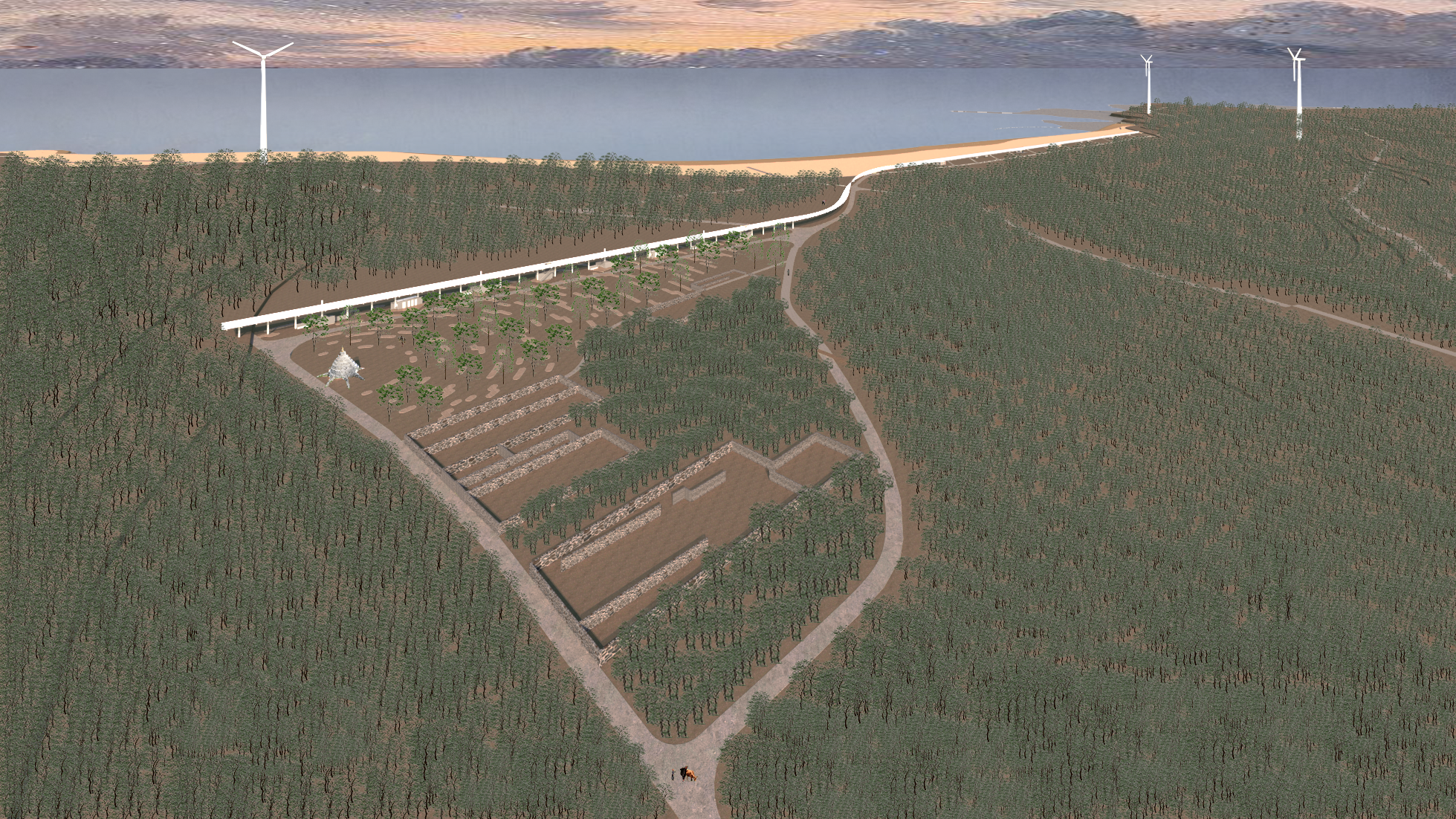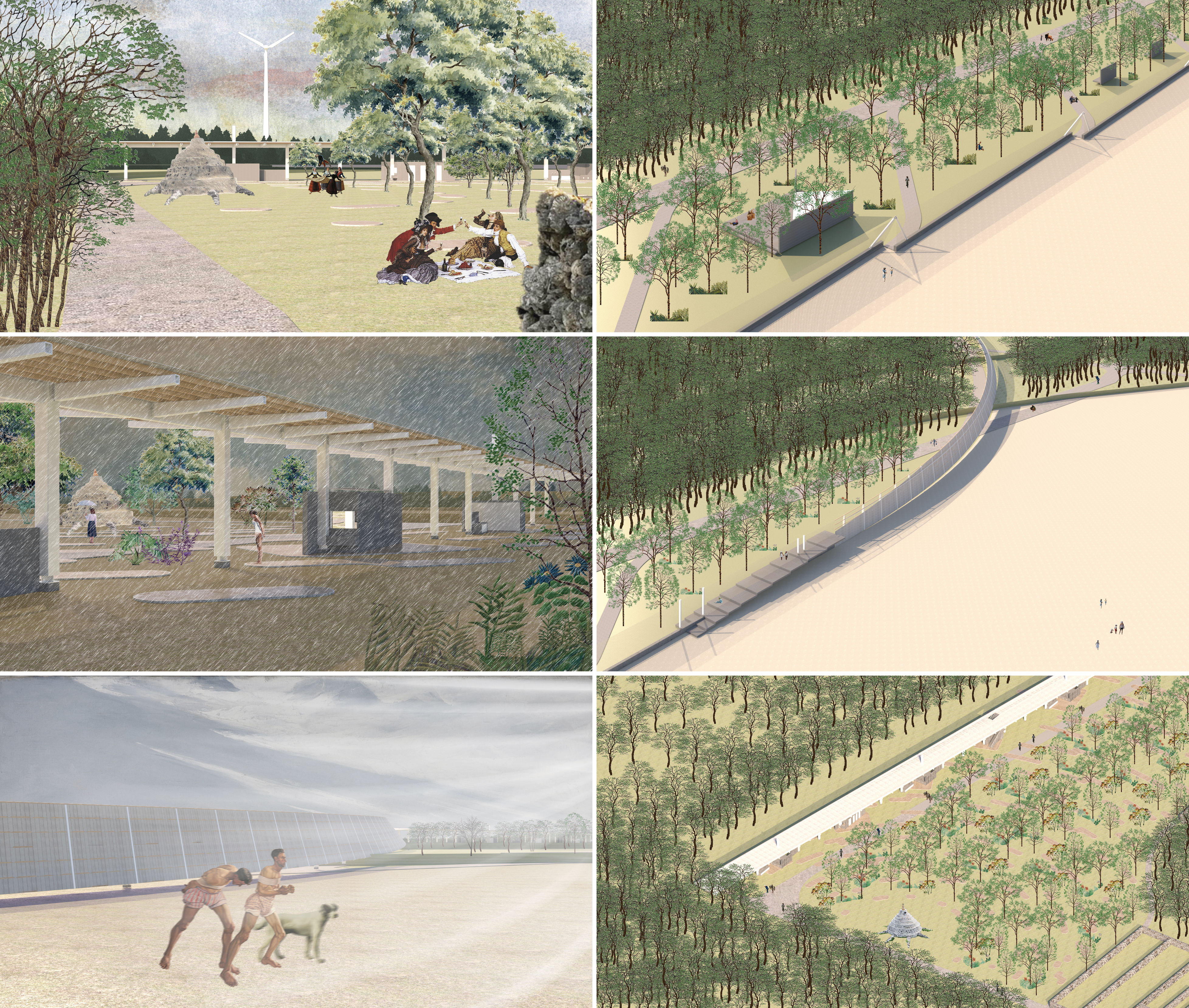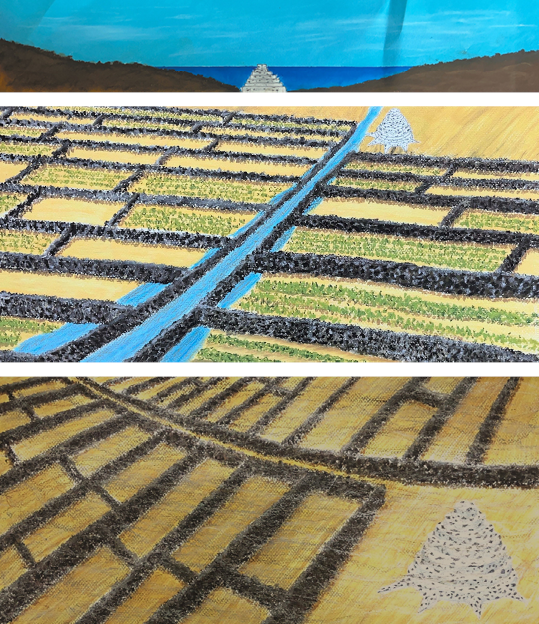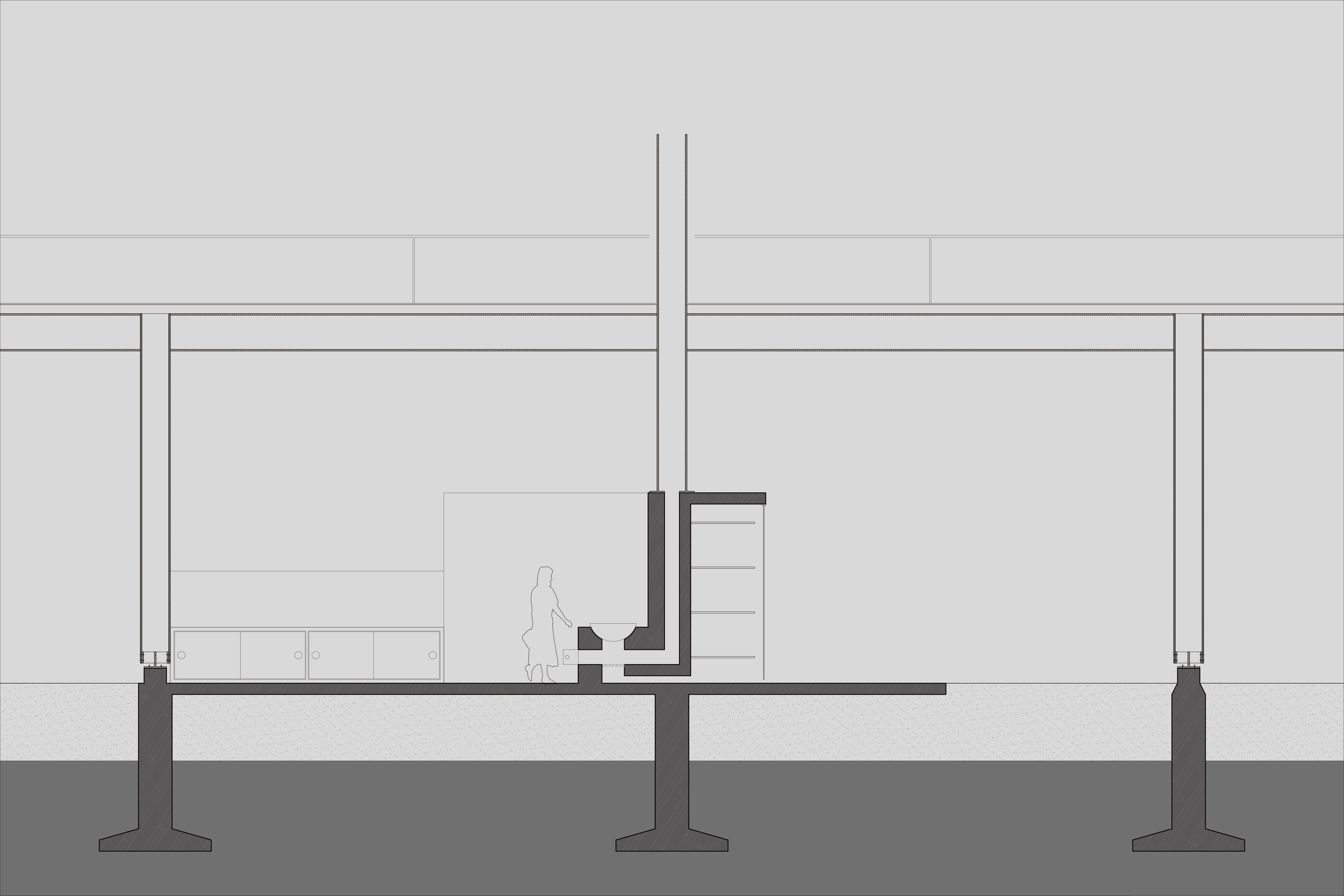遺忘…土地…延續
Forgetting … Land … Continuation
李曄舜


透過考究對腳下土地有更多理解與想像
設計說明
給予被遺忘的土地一個延續的機會
基地
澎湖縣湘西鄉龍門村塔腳以北
過去村民看天吃飯,朝出暮歸的作息與土地有著緊密的連結。這種人與土地的連結表現在了地名上。大部分的命名方式都是在描述地形變化,反映了村民過往是如何敏銳的看見自然與利用自然。
塔作為人們欲抵抗自然的手段,落在了土地上。石塔建於清代,石塔下代表著八卦的八隻腳,意味著塔將一切自然現象鎮住,讓看天吃飯的村民可以在貧瘠的土地與惡劣的氣候中生存下去。
而現在洋流將垃圾從遙遠的海洋帶進村落,村民在北側海岸築起長牆抵擋垃圾;隨著農田的廢耕,銀合歡從村子外圍侵入到村子的內部。
我將現在正在發生的歷史帶入石塔周圍,將抵擋海漂垃圾的垂直線與代表石塔過去意義的水平線,串聯在一起。形成一個新的地名『腳後』。
Site
Thah-kha in Longmen, Huxi, Penghu
In the past, villagers relied on observing the sky to determine meal times, and their daily routines of leaving at dawn and returning at dusk were closely intertwined with the land. This connection between people and the land is reflected in the place names. Most names describe changes in terrain, reflecting how villagers were keenly attuned to nature and utilized it.
The tower, as a means for people to resist nature, was erected on the land. Built during the Qing Dynasty, the stone tower’s base represents the eight feet of the Bagua, symbolizing the tower’s ability to suppress all natural phenomena, allowing the villagers who observed the sky to survive in the barren land and harsh climate.
However, nowadays, ocean currents bring garbage from distant seas into the village. To combat this, villagers have erected long walls along the northern coastline to block the garbage. With the abandonment of farmland, Silver Wattle trees have encroached from the outskirts of the village into its interior.
I incorporate the ongoing history into the surroundings of the stone tower, connecting the vertical line of defense against marine debris with the horizontal line representing the past significance of the tower, forming a new place name, “Kha-āu.”





